Etsy is no longer supporting older versions of your web browser in order to ensure that user data remains secure. Please update to the latest version.
Take full advantage of our site features by enabling JavaScript.
(181 relevant results)
Skip to content
These sandals are from the African country of Zimbabwe. They are made from rubber tires. When tires are too worn out to be safely used on vehicles, they are still very sturdy and make great sandals.
The soles of these sandals are made from the tire tread, which is quite stiff, protecting the soles of the wearer’s feet from the ground below. The tops (or ‘upper’) are made from the tire sidewall, which is much softer so more comfortable for the foot.
Fun fact:
On the sole of this sandal, there are very small stones lodged in the tread, picked up from the road when the tire was on a vehicle, driving along a gravelly road.
In many countries around the world, old tires can easily be found at the side of the road, at the dump, or in a local car repair shop. And they don’t cost anything! If you have a knife and a couple of other simple tools, you can make sandals for the whole family along with some extras to sell at the local market.
Watch this video of a man making rubber tire sandals for his customer. Notice how he uses the side of his knife as a measuring tool. Did you do the measuring activity in Feature of the Week #1? Did you use paper clips, Barbie shoes, hockey pucks or a ruler?
Notice how he uses the side of his knife as a measuring tool. Did you do the measuring activity in Feature of the Week #1? Did you use paper clips, Barbie shoes, hockey pucks or a ruler?
Rubber tires are used all over the world to make sandals and shoe soles. Here are some rubber tire sandals and shoes in the Bata Shoe Museum collection, and the country where they were made.
Italy
Bolivia
Pakistan
Kenya
Tanzania
Find the countries above on a map. How many are on the continent of Africa? Europe? South America? Asia?
Will you ever look at rubber tires in the same way again?
Back To Main
By Transit
From the St. George subway station (on both the Bloor-Danforth and the Yonge-University lines), exit onto St. George Street. Turn left (walk south) for about 30 seconds and you’ll be at the northeast corner of Bloor Street West and St. George Street. From there, cross the road twice to reach the southwest corner of the intersection, and you’re at the Museum!
George subway station (on both the Bloor-Danforth and the Yonge-University lines), exit onto St. George Street. Turn left (walk south) for about 30 seconds and you’ll be at the northeast corner of Bloor Street West and St. George Street. From there, cross the road twice to reach the southwest corner of the intersection, and you’re at the Museum!
By Car
From Highway 401
Take the Avenue Road exit and go south to Bloor Street. Turn right onto Bloor Street and continue west to St. George Street. OR take the Bathurst Street exit and go south to Bloor Street. Turn left onto Bloor Street and continue east to St. George Street.
From the Queen Elizabeth Way (QEW)
Get onto the Gardiner Expressway and exit at Spadina Avenue. Proceed north on Spadina to Bloor Street. Then turn right onto Bloor Street and go east on Bloor to St. George Street.
Parking
Street parking and paid parking lots within walking distance of the Museum may be available. Possibilities include:
The Toronto Parking Authority’s Carpark 58, the Bloor-Bedford Garage: 9 Bedford Road, north of Bloor Street West and two blocks east of the Museum.
The Toronto Parking Authority’s Carpark 205: 465 Huron Street, north of Bloor Street West and one block west of the Museum
Search in https://batashoemuseum.ca/Counting down to the opening of our newest exhibition, The Great Divide: Footwear in the Age of Enlightenment.
Do you have your tickets yet?
Minutes
Seconds
Continue
This collection of photos, curated by The Histographer, is a collection around the concept of \'Autumn is here\'.
There can be many reasons why you might be left without shoes in the field or hiking away from populated areas. Here's an option: the shoes were left to dry by the fire, but you overlooked - and it partially burned down. Another option: your dog, playing with a shoe on the bank of a mountain stream, accidentally dropped it, and the shoe quickly swam downstream. The dog liked this dynamic scene, and she repeated the procedure with the second boot.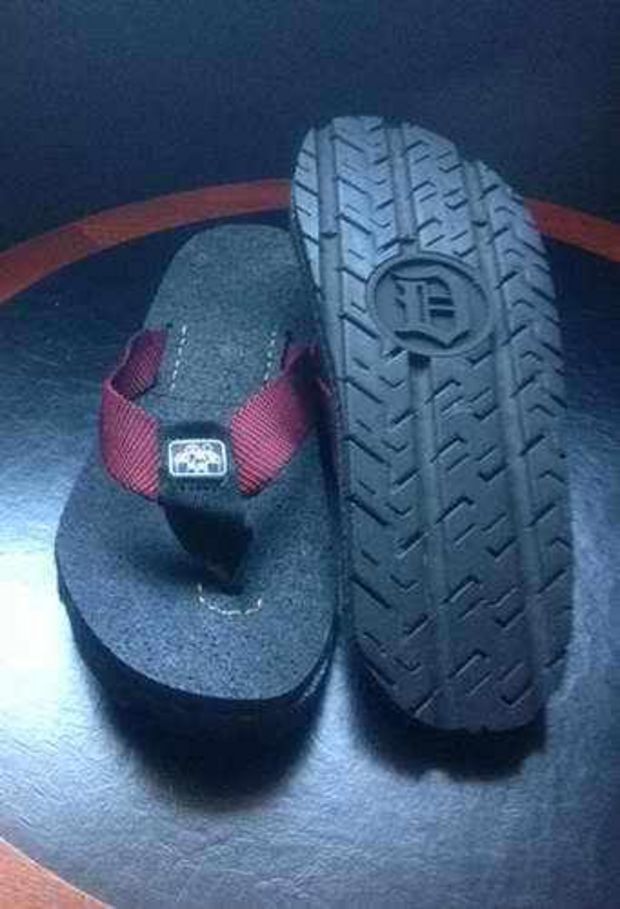 nine0003
nine0003
But now we will not talk about the reasons why you lost your shoes. In the off-season or in winter, you need to find an immediate way out of this situation. First of all, you need to insulate your legs. You can wrap them with any dry warm soft things (jacket, torn pants, sweater, etc.), cover them with dense material from above and then tighten them with a rope. You can also insulate your feet by stuffing bird feathers, down, dry leaves, moss or grass between two layers of socks worn on your feet (or layers of windings). nine0003
After that, you need to build some kind of temporary shoes from improvised means. Homemade shoes will help you out until the end of your autonomous existence or until help arrives.
The simplest shoes, commonly referred to as “wrapping”, are several pieces of dense dry fabric measuring 80x80 cm. These pieces are superimposed on each other and then folded so that a right-angled isosceles triangle is formed. The foot is placed in the center of this triangle with the fingers towards the right angle.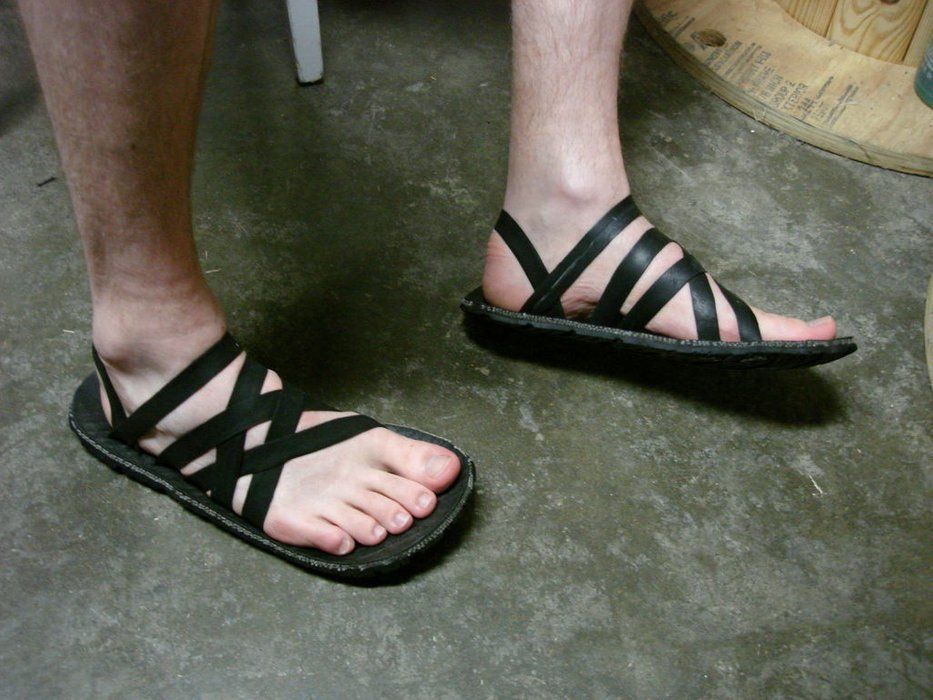 This corner is bent first, followed by others. On top of the "wrapper" is tied with thin straps or ropes. nine0003
This corner is bent first, followed by others. On top of the "wrapper" is tied with thin straps or ropes. nine0003
Plastic bottles can be turned into shoes. If one bottle is available, then it must be cut lengthwise into identical halves. Legs are placed in these halves and tied around with ropes.
If there are two bottles, a hole is cut in each of them so that the foot can pass freely through it with the toe extended forward. This "boot" is more comfortable and more airtight. Of course, on such plastic boots you will not go far on slippery slopes or rocky paths, but on grassy soft ground they will serve well and for a long time. nine0003
Sturdy shoes are made from motorcycle or car tires. Soles are cut out of the tire, and straps are cut out of the chamber, with the help of which the soles are attached to the legs. It should be remembered that such hard shoes should be worn on legs well wrapped in several layers of fabric.
Softer motorcycle tires can simply be cut into short (leg-length) lengths. Get "boats". You need to insert your legs into them, pull off the upper edges of the “boats” with straps or ropes, and you can go about your business. nine0003
Get "boats". You need to insert your legs into them, pull off the upper edges of the “boats” with straps or ropes, and you can go about your business. nine0003
Soles with lugs on the edges are cut from a car tire according to the size of the foot. To do this, a template is cut out of cardboard or thick paper, as in the figure:
Soles are cut out of the tire using this template:
Straps (or ropes) cut from the camera are attached to the ears of the soles. Now you can put on the received sandals, fasten the straps (tie ropes) and go where you need to go.
Another option: two soles are cut out on the side of the car tire (fragment “a” of the lower picture), two cuts are made between the layers of the tire (fragment “b”), straps or ropes are threaded into these slots (fragment “c”) . It turns out another model of sandals. nine0003
As the experience of poor African countries shows, very comfortable shoes can be made from old tires. Afghan peasants also make original sandals from tires.
Afghan peasants also make original sandals from tires.
An improvised sole can also be made from a piece of birch bark (birch bark), linden bark (bast) or willow. Such shoes for long-distance transitions are of little use, but for some time they can protect the feet from thorns, sharp stones and hypothermia.
Practice shows that people who find themselves in extreme conditions successfully use a variety of improvised means as shoes: metal, plastic and other durable boxes (for example, old brake fluid or oil cans), earflaps tied to their feet ( etc. to the best of your imagination). In extreme conditions, reliable homemade shoes can be a necessary condition for survival. nine0003
These articles are also useful to read:
♦ How to store things properly
♦ How to care for winter shoes
♦ Crafts from ordinary plastic bags
An entertaining video on how to renew old shoes:
4 Summer has already crossed its equator, but its second half is still ahead.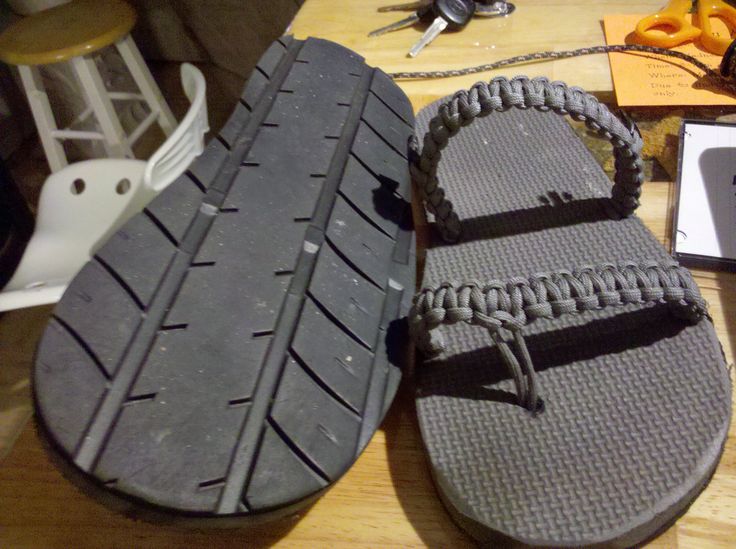 Summer is the time for holidays, travels and long walks, but what will make it more comfortable and enjoyable? Well, of course, comfortable, light shoes. nine0003
Summer is the time for holidays, travels and long walks, but what will make it more comfortable and enjoyable? Well, of course, comfortable, light shoes. nine0003
Today I want to tell you how you can make leather sandals in a relatively short time.
First, let's look at what you need.

First of all, we place our sole or your half-pair on cardboard and trace it, cut it out.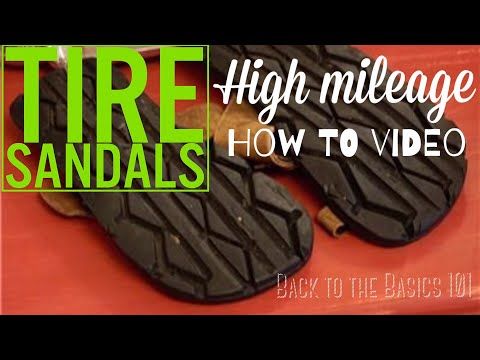
Then draw a line along the entire edge of the pattern at a distance of 5 mm from the edge.
Draw a line along the edge of the heel.
We mark the lines for the holes in which the straps will pass. The location of the straps can be different, it all depends on the design of the sandals that you choose or come up with yourself.
Using a punch and a mallet, we punch holes in our pattern.
Next, place our pattern on the skin and also outline and cut it out.
We process the surface of the skin with a finishing agent.
Then we transfer the lines under the straps to the skin, draw, punch holes in the skin. nine0003
Using a ruler and a knife, we cut the straps we need the width. We pass them through the holes and see what we get approximately.
Then, on one side of each strap, cut off a layer of leather with a knife, thus making it thinner.
Punch holes for the buckles.
Then we punch round holes in the other two straps after cutting off the edge at an angle.
After that, we start painting the straps.
We paint over the front side, ends and reverse side.
We wait until it dries and finish the front side of all straps.
Install the buckle, coat with glue. After 10 minutes, heat over the stove or with a building hair dryer and glue.
Punch a hole in the strap for the rivet.
Rivet.
Next, we coat the places on the back of the insole where the straps will be attached.
Thread the straps through the holes, adjust on the last or foot, cut off the excess and glue it to the insole.
We cut off excess skin with a knife, the blade must be sharp, for this procedure it is better to use a new blade.
Spread the entire insole very carefully with glue, repeat the process after 10-15 minutes.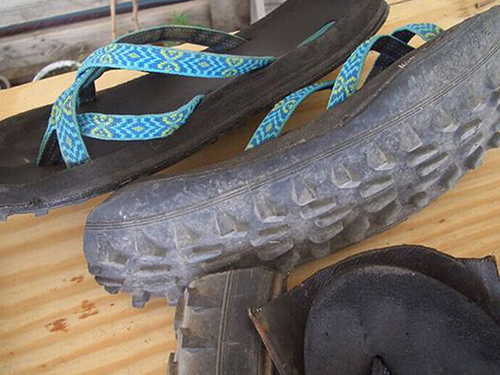 nine0003
nine0003
Next, cut out four pieces of leather 10 mm wider than the length and width of our heels.
We glue them after pre-processing the gluing places with sandpaper.
We make a cut with a knife as in the photo and process the same with sandpaper.
We glue this blank and the insole, after gluing evapore between them - so that the place under the heel is soft. nine0003
We also cut off the excess skin, leaving a couple of millimeters.
Coat with glue.
We place our template on a sheet of microporous rubber and circle it by adding 5 mm along the edges.
Using a knife, cut out the blanks for the sole.
The surface of the micropore must always be treated with sandpaper and thinner.
We apply glue in the same way as on the insole in two layers.
We wait, heat up and carefully glue our upper with the sole.